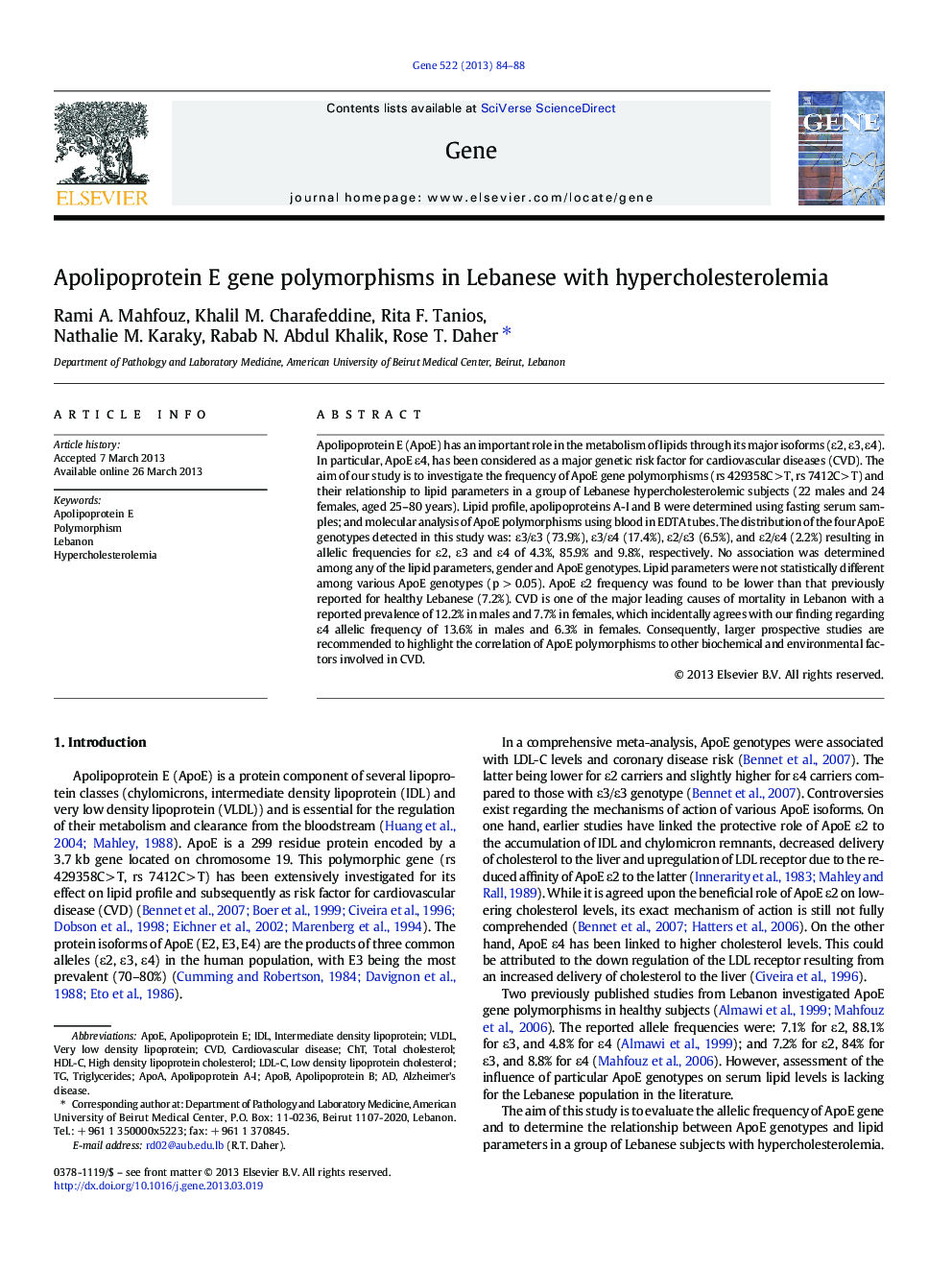| Article ID | Journal | Published Year | Pages | File Type |
|---|---|---|---|---|
| 2817236 | Gene | 2013 | 5 Pages |
•ApoE in hypercholesterolemic Lebanese: ε2 = 4.3%, ε3 = 85.9%, and ε4 = 9.8%•ApoE genotypes did not correlate with lipid parameters•ApoE ε2 frequency was lower than previously reported for healthy Lebanese•ApoE ε4 allelic frequency was higher in males (13.6%) than females (6.3%)
Apolipoprotein E (ApoE) has an important role in the metabolism of lipids through its major isoforms (ε2, ε3, ε4). In particular, ApoE ε4, has been considered as a major genetic risk factor for cardiovascular diseases (CVD). The aim of our study is to investigate the frequency of ApoE gene polymorphisms (rs 429358C > T, rs 7412C > T) and their relationship to lipid parameters in a group of Lebanese hypercholesterolemic subjects (22 males and 24 females, aged 25–80 years). Lipid profile, apolipoproteins A-I and B were determined using fasting serum samples; and molecular analysis of ApoE polymorphisms using blood in EDTA tubes. The distribution of the four ApoE genotypes detected in this study was: ε3/ε3 (73.9%), ε3/ε4 (17.4%), ε2/ε3 (6.5%), and ε2/ε4 (2.2%) resulting in allelic frequencies for ε2, ε3 and ε4 of 4.3%, 85.9% and 9.8%, respectively. No association was determined among any of the lipid parameters, gender and ApoE genotypes. Lipid parameters were not statistically different among various ApoE genotypes (p > 0.05). ApoE ε2 frequency was found to be lower than that previously reported for healthy Lebanese (7.2%). CVD is one of the major leading causes of mortality in Lebanon with a reported prevalence of 12.2% in males and 7.7% in females, which incidentally agrees with our finding regarding ε4 allelic frequency of 13.6% in males and 6.3% in females. Consequently, larger prospective studies are recommended to highlight the correlation of ApoE polymorphisms to other biochemical and environmental factors involved in CVD.
